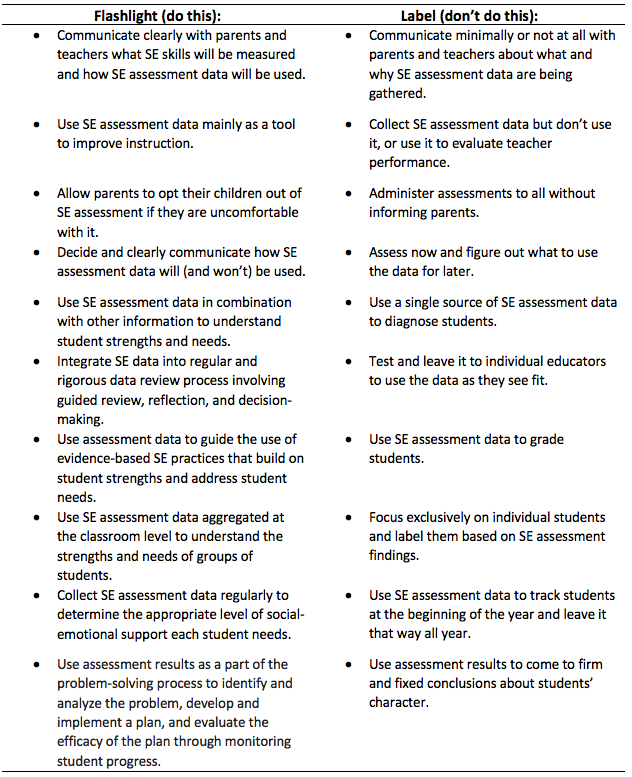Multi-tiered systems of support, or MTSS, are based on a simple and positive premise: We should use data to teach in ways that build on student strengths and address student needs. At its best, MTSS guides educators to use assessment data to teach in the most effective way possible.
As my colleagues and I work to develop and distribute scalable and technically sound social-emotional (SE) assessments, educators often ask about the role of SE assessment in MTSS.
Some have argued that SE assessment should not be used as part of MTSS because of the risk of inadvertently labelling or stigmatizing students. I believe that good SE assessment data, used properly, can guide instructional decision-making with maximum benefit and minimal risk.
So how can SE assessment data be used properly? If used as a flashlight, SE assessment data can shine a light on student strengths and needs and guide educators to use the very best strategies to foster academic, social, and emotional skill development. If used to affix a label, SE assessment data can cause harm through stigma and inappropriate placement decisions.
How can educators use SE data properly in an MTSS framework? The following table describes “flashlight” and “label” practices.

If SE assessment data are used as a flashlight, they can provide a strong and informed basis for making decisions about how best to teach students. In so doing, data users maximize the potential benefit and minimize risk. The alternative is to use our hunches and impressions, which, in my opinion, are poor substitutes for good data.
One Comment
Comments are closed.



Informative article, exactly what I was looking for.